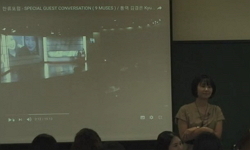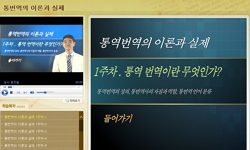범패(梵唄)는 불교의 의식음악이자 수행으로 불교가 있는 나라에는 보편적으로 존재하는 종교현상이다. 범패의 한자 표현은 범패(梵唄)인데 이는 중국과 한국이 동일하다. 범패는 불교의 발...
http://chineseinput.net/에서 pinyin(병음)방식으로 중국어를 변환할 수 있습니다.
변환된 중국어를 복사하여 사용하시면 됩니다.
- 中文 을 입력하시려면 zhongwen을 입력하시고 space를누르시면됩니다.
- 北京 을 입력하시려면 beijing을 입력하시고 space를 누르시면 됩니다.

범패(梵唄)라는 용어의 해석에 대하여 = About Interpretation of BUMPAE (梵唄;universal paean the Korean Buddhist chant)
한글로보기https://www.riss.kr/link?id=A107220152
- 저자
- 발행기관
- 학술지명
- 권호사항
-
발행연도
2020
-
작성언어
-
-
주제어
범패 ; 梵唄 ; 불음 ; 佛音 ; 범음ㆍ범패 ; 어산ㆍ작법 ; 사전적 설명 ; Bumpae ; voice of Buddha ; Bumeum·Bumpae ; 梵音·梵唄 ; Eosan·Jakbub ; 魚山ㆍ作法 ; Interpretation
-
등재정보
KCI등재
-
자료형태
학술저널
-
수록면
59-84(26쪽)
-
KCI 피인용횟수
0
- 제공처
- 소장기관
-
0
상세조회 -
0
다운로드
부가정보
국문 초록 (Abstract)
범패(梵唄)는 불교의 의식음악이자 수행으로 불교가 있는 나라에는 보편적으로 존재하는 종교현상이다. 범패의 한자 표현은 범패(梵唄)인데 이는 중국과 한국이 동일하다. 범패는 불교의 발생지인 인도에서 전해진 것으로 그 어원은 고대 힌두교 의식의 찬가를 뜻하는 pāṭha이며 현행 용어 범패(梵唄)도 범어식으로 보면 brahma와 pāṭha의 조합이다. 범패는 초기불교 교단에서 pāṭha(唄의 원어)로 불리던 것이 중국으로 전해져서 포개(蒲介;púgà), 파사(婆沙;póshà) 또는 패익(唄匿;bàinì) 등으로 번역되었고 범(梵)자가 결합하여 오늘날 사용하는 용어 범패(梵唄;fànbài)로 전해졌는데 본 논문의 주제는 그 용어의 해석 방향에 대한 고찰이다. 오늘날 한국불교에서는 범음․범패 및 어산․작법이라는 두 가지 형태의 용어가 사용되는데 전자는 다국적 범패를 수용한 의미를 가지고 후자는 중국 전승의 범패라는 역사적 의미가 강조되는 용어이다. 그 중의 범음(梵音)은 불음(佛音)이라는 의미를 가지는데 이는 범패를 통해 전승된 수행적인 의미가 강조되는 용어이며 범패는 의례에 소요되는 다양한 문화적 요소를 포괄한다. 뿐만 아니라 범패는 전독(轉讀), 패찬(唄讚), 가영(歌詠), 어산범패(魚山梵唄), 인도(引導)소리 등 법회의 목적과 행법에 따라 다양한 용어로 파생되었지만 이러한 용어들의 관리와 활용은 교단에 소속한 종교인들의 의무라고 할 수 있다. 따라서 일반 대중에게 소개되는 용어는 최소한으로 족할 것이지만 그 용어해석은 사물의 본질에 상응하는 적절함이 요구된다고 할 것이다. 왜냐하면 범패는 불교의 종교의례를 상징하는 중요한 용어이므로 그 의미의 전달은 민중의 불교에 대한 인식과 수용에 적지 않은 영향을 미칠 것이기 때문이다.
다국어 초록 (Multilingual Abstract)
The Bumeum has meaning that it's original sound of Buddha on the word of Bumeum·Bumpae, this is emphasize meaning of meditation in Bumpae. These meaning of BUMEUM(梵音;the universal sound) may had been transmission by JAMO(字母;Mother Character) in India, China and Korea also in Jittisory in Korea. We are able to know that These Bumeum are belief as it's a method to attain Buddhahood by best belief and methodology by trainees belong Mahayana Buddhism because that title has such meaning those are Buddha's voice and sermon. Particularly, these trend is very appeared deeply through sutras. The BUMPAE include like pray to Buddha, chanting sutra, play instruments, dancing, offering, Bumpae which attend to Korean YEONGSAN(靈山;spiritual mountain) ritual ceremony In the system of BUMEUM·BUMPAE(梵唄;universal paean). there are one kind of commonalities, it is element of praising when watch in position of Bumpae even those diverse practice are practiced by diverse type and methodology. Because the premised thing when join every practice are three devotions, and four pledges. If there aren't wish to praising, not can do to become a believer and vow. therefore, the suitable meaning of BUMPAE which is common title for BUMEM·BUMPAE there may as well going to be served to express like ‘The sound of praising Buddha.’
There are originated various style and mean of Bumpae but it is responsibility of experts to control for various words. Besides, it would be sufficient for the word to recommend for public as minimum word of numeral also the content should be suitable. because it would be foundation of increase for Buddhism culture also nostalgia of popular for suitable expression of word about Bumpae which are ritual ceremony and self-reflection of Buddhism. Therefor, I consider that the glossary of Bumpae should be stay not like “it is the sound from temple when have ritual ceremony” but it's advisable as the glossary “the sound for praise Buddha” or “the music for praise Buddhism”.
BUMPAE(梵唄) is ritual music also self-reflection of Buddhism which are the phenomenon on every where if there are belief Buddhism. The expression of chinese character is Bumpae, those are same both of China and Republic of Korea. this like Bumpae w...
BUMPAE(梵唄) is ritual music also self-reflection of Buddhism which are the phenomenon on every where if there are belief Buddhism. The expression of chinese character is Bumpae, those are same both of China and Republic of Korea. this like Bumpae was transmitted from India which is the place of origin of Buddhism, also that word is occurred on ancient hindu culture. The etymology of Bumpae is pāṭha meaned Veda chant of ancient hindu, interpret of word for present Bumpae are combination with brāhma' and ‘pāṭha’. However, also this etymology could not over to one meaning what is origin of shape only, according of that the position which are grown Buddhism as philosophy the one and only. The origin of Bumpae that just have been called as pāṭha in early Buddhim organization, called again as 蒲介(púgà), 婆沙(póshà) or 唄匿(bàinì) on the way of transliteration while following The silk road to China, was became the Bumpae(梵唄) word of present finally. Nowaday there are used the twice of couple words Bumeum(梵音)·Bumpae(梵唄) as meaning of acception for histories of multinational Bumpae and also Eosan(魚山)·Jakbeob(作法) as word which is belief as it is transmission from China only.
The Bumeum has meaning that it's original sound of Buddha on the word of Bumeum·Bumpae, this is emphasize meaning of meditation in Bumpae. These meaning of BUMEUM(梵音;the universal sound) may had been transmission by JAMO(字母;Mother Character) in India, China and Korea also in Jittisory in Korea. We are able to know that These Bumeum are belief as it's a method to attain Buddhahood by best belief and methodology by trainees belong Mahayana Buddhism because that title has such meaning those are Buddha's voice and sermon. Particularly, these trend is very appeared deeply through sutras. The BUMPAE include like pray to Buddha, chanting sutra, play instruments, dancing, offering, Bumpae which attend to Korean YEONGSAN(靈山;spiritual mountain) ritual ceremony In the system of BUMEUM·BUMPAE(梵唄;universal paean). there are one kind of commonalities, it is element of praising when watch in position of Bumpae even those diverse practice are practiced by diverse type and methodology. Because the premised thing when join every practice are three devotions, and four pledges. If there aren't wish to praising, not can do to become a believer and vow. therefore, the suitable meaning of BUMPAE which is common title for BUMEM·BUMPAE there may as well going to be served to express like ‘The sound of praising Buddha.’
There are originated various style and mean of Bumpae but it is responsibility of experts to control for various words. Besides, it would be sufficient for the word to recommend for public as minimum word of numeral also the content should be suitable. because it would be foundation of increase for Buddhism culture also nostalgia of popular for suitable expression of word about Bumpae which are ritual ceremony and self-reflection of Buddhism. Therefor, I consider that the glossary of Bumpae should be stay not like “it is the sound from temple when have ritual ceremony” but it's advisable as the glossary “the sound for praise Buddha” or “the music for praise Buddhism”.
참고문헌 (Reference)
1 윤소희, "화엄자모와 범어 범패" 한국국악학회 55 : 153-190, 2014
2 한동희스님, "한동희스님 靈山大作法-공연팜플렛"
3 임인영, "상좌부불교의 염불수행 연구" 한국불교학회 (90) : 41-69, 2019
4 서정매, "범패 짓소리에 관한 연구 - 구해스님의 <인성>과 <거령산>의 선율 관계를 중심으로 -" 한국공연문화학회 (31) : 353-397, 2015
5 윤소희, "범어범패 연구Ⅰ - 범어범패의 장르적 특성에 관하여 -" 한국국악학회 60 : 207-233, 2016
6 "달오름극장, 일시; 1995.12.3"
7 梵唄常住勸供, "교육자료" 靈山齋 傳受道場梵音大學
8 "鬱鞞國;우루벨라"
9 "高僧傳(卷13, T50)"
10 "長阿含經 卷1, (T01. 5a)"
1 윤소희, "화엄자모와 범어 범패" 한국국악학회 55 : 153-190, 2014
2 한동희스님, "한동희스님 靈山大作法-공연팜플렛"
3 임인영, "상좌부불교의 염불수행 연구" 한국불교학회 (90) : 41-69, 2019
4 서정매, "범패 짓소리에 관한 연구 - 구해스님의 <인성>과 <거령산>의 선율 관계를 중심으로 -" 한국공연문화학회 (31) : 353-397, 2015
5 윤소희, "범어범패 연구Ⅰ - 범어범패의 장르적 특성에 관하여 -" 한국국악학회 60 : 207-233, 2016
6 "달오름극장, 일시; 1995.12.3"
7 梵唄常住勸供, "교육자료" 靈山齋 傳受道場梵音大學
8 "鬱鞞國;우루벨라"
9 "高僧傳(卷13, T50)"
10 "長阿含經 卷1, (T01. 5a)"
11 安震湖, "釋門儀範" 法輪社(前卍商會) 1996
12 "翻譯名義集 卷4, (T54. 1123c)"
13 "百丈清規證義記 卷1, (X63. 373a)"
14 "無礙解道 卷3, (N44. 59a)"
15 "法苑珠林 卷36 (T53, 575a)"
16 "方廣大莊嚴經 卷3, (T03, 552c)"
17 "妙法蓮華經玄贊 卷4, (T34. 727b)"
18 "大般涅槃經 卷1, (T01. 192c)"
19 "大智度論, (T25. 408b)"
20 "四分律行事鈔批 卷13, (X42. 750a)"
21 "佛說如來不思議祕密大乘經 卷9, (T11, 726a)"
22 "佛說大乘入諸佛境界智光明莊嚴經, (T12. 258a)"
23 "一切經音義 卷59, (T54, 699c)"
24 "sanskrit dictionary"
25 "X: 만속장경"
26 "T: 대정신수대장경"
27 "N: 티베트장경(Narthang판)"
28 "Brahma"
동일학술지(권/호) 다른 논문
-
- 동아시아불교문화학회
- 강대현 ( Kang Dae-hyun )
- 2020
- KCI등재
-
- 동아시아불교문화학회
- 성청환 ( Sung Chung-whan )
- 2020
- KCI등재
-
- 동아시아불교문화학회
- 김진이 ( Kim Jin-yi )
- 2020
- KCI등재
-
『대승기신론』의 이장(二障)에 대한 원효와 혜원의 해석 비교
- 동아시아불교문화학회
- 정은희 ( Jeong Eun-hee )
- 2020
- KCI등재
분석정보
인용정보 인용지수 설명보기
학술지 이력
| 연월일 | 이력구분 | 이력상세 | 등재구분 |
|---|---|---|---|
| 2026 | 평가예정 | 재인증평가 신청대상 (재인증) | |
| 2020-01-01 | 평가 | 등재학술지 유지 (재인증) |  |
| 2017-01-01 | 평가 | 등재학술지 유지 (계속평가) |  |
| 2013-01-01 | 평가 | 등재학술지 선정 (등재후보2차) |  |
| 2012-01-01 | 평가 | 등재후보 1차 PASS (등재후보1차) |  |
| 2010-01-01 | 평가 | 등재후보학술지 선정 (신규평가) |  |
학술지 인용정보
| 기준연도 | WOS-KCI 통합IF(2년) | KCIF(2년) | KCIF(3년) |
|---|---|---|---|
| 2016 | 0.55 | 0.55 | 0.49 |
| KCIF(4년) | KCIF(5년) | 중심성지수(3년) | 즉시성지수 |
| 0.5 | 0.51 | 0.714 | 0.17 |




 KISS
KISS







